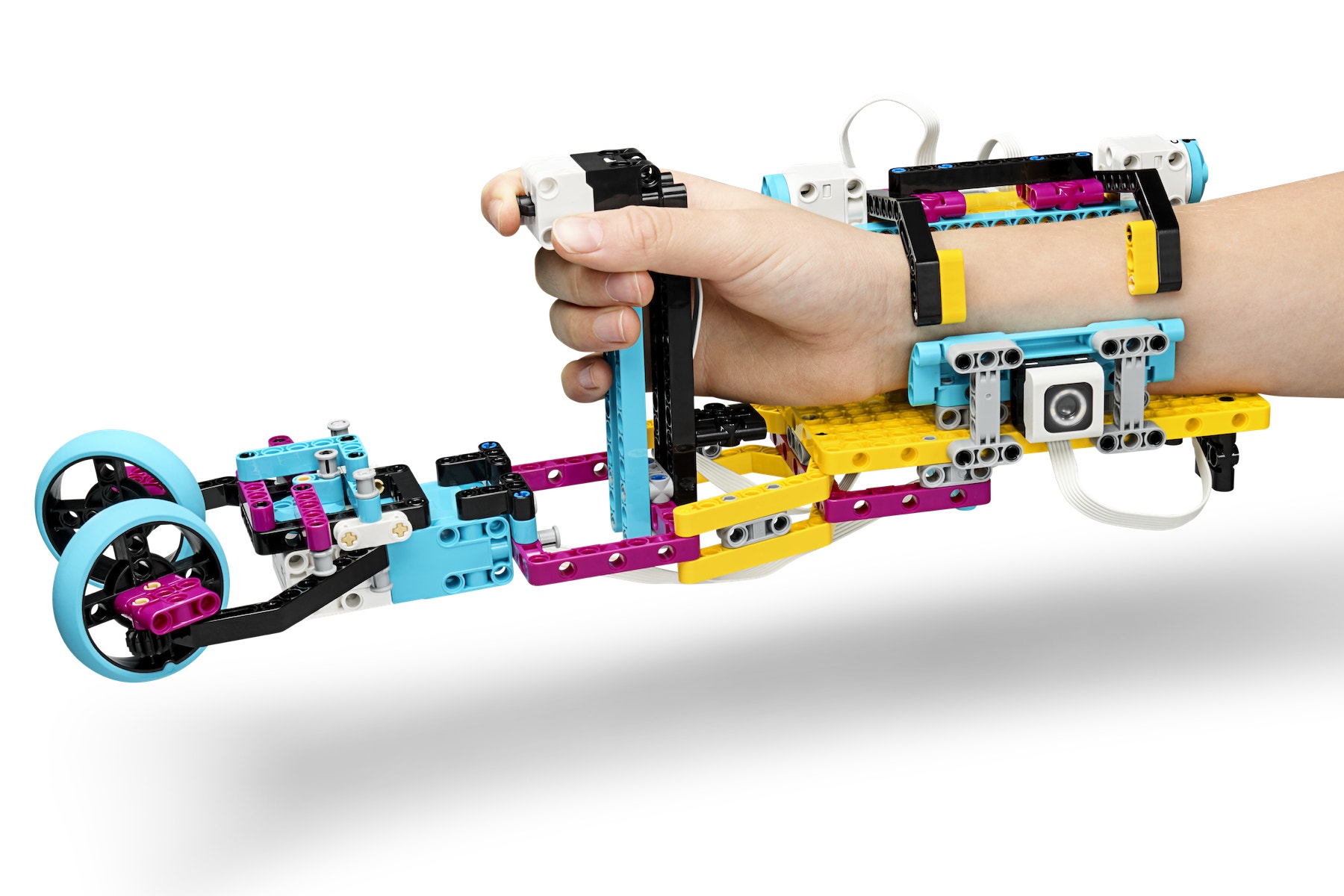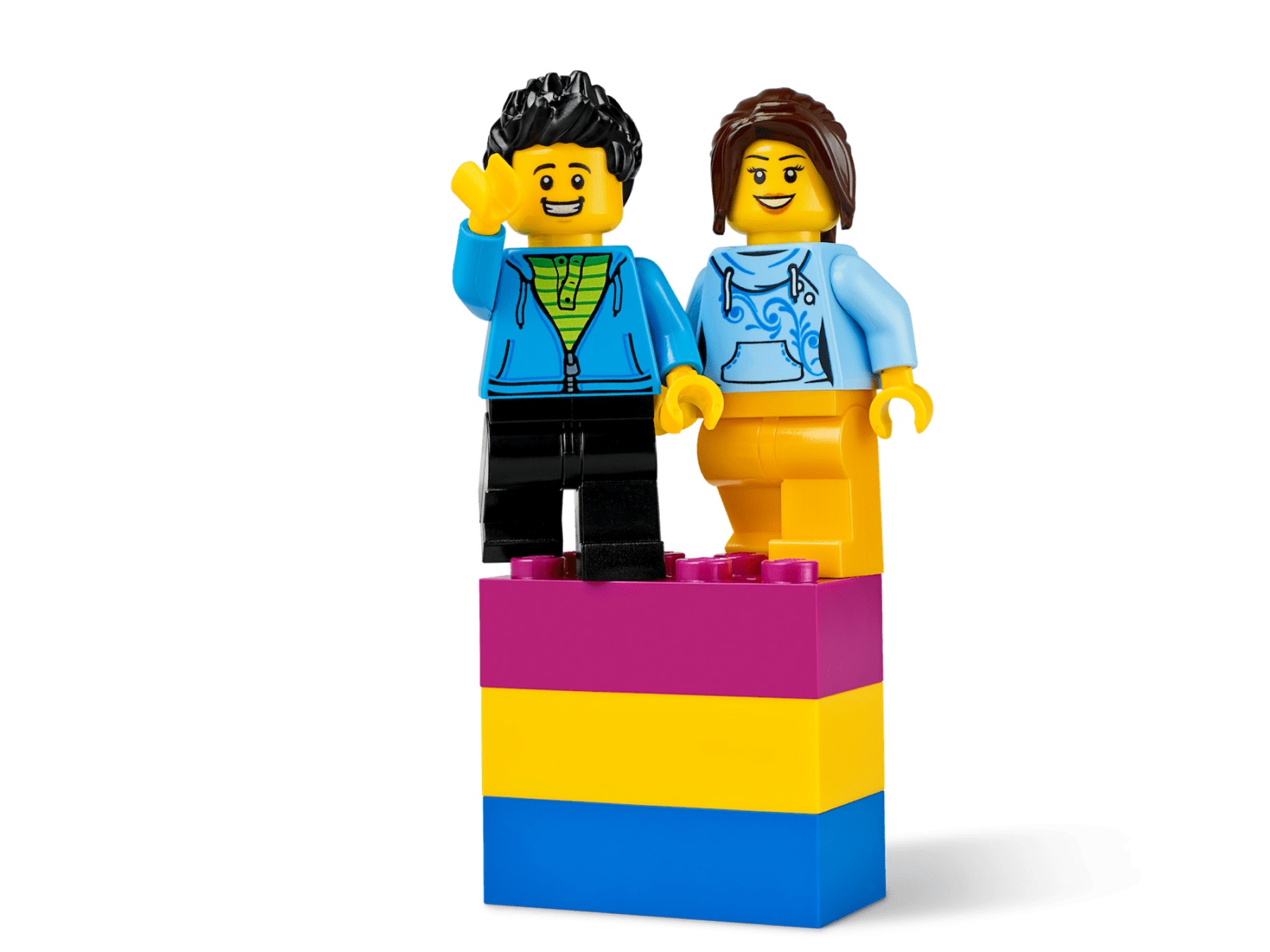Design for Someone
Use the complete design process to solve a real-world problem linked to prostheses.

Lesson plan
1. Prepare
- Read through the student material in the LEGO® Education SPIKE™ App.
- Plan accordingly, this project is designed to be run over multiple sessions.
Part A
2. Engage (15 Min.)
- Use the ideas in the Ignite a Discussion section below to engage your students in a discussion related to this lesson.
- Use the video to explain the lesson.
3. Explore (30 Min.)
- Allow your students time to brainstorm.
- Have them work in pairs to choose 2 ideas they'd like to try.
Part B
4. Explain (45 Min.)
- Have each pair of students build and test their 2 chosen solutions.
- Make sure they can create their own tables to collect data about their testing method.
Part C
5. Elaborate (45 Min.)
- Facilitate a sharing session with each team presenting their results.
6. Evaluate
- Give feedback on each student's performance.
- You can use the assessment rubrics provided to simplify the process.
Ignite a Discussion
Start a discussion about prosthetics and what your students would do if they had to replace someone's hand with a new function.
- Have them think about someone who's missing a limb and what they'd most like to do with a prosthesis.
- Ask them to get crazy and think about reinventing a hand. What would a chef, mechanic, or even a student like them like to have instead of a hand?

David Aguilar Amphoux
Building Tips
Open-Ended Solutions
This project is designed so that every student or team can have a unique solution.
Example Solution
Give all of your students the same starting point by having them build this arm. Ask them to make it their own by designing a specific function such as grabbing fairly big objects.
Here's an idea you can use as a proof of concept.


Coding Tips
Main Program

Differentiation
Simplify this lesson by:
- Using the suggested example solution as the starting point for all students
- Narrowing the task to something very specific such as picking up a piece of fruit or turning a door handle.
Take this lesson to the next level by:
- Inviting a specialist from the prosthesis department at a college, hospital, or university to speak to your class.
- Pairing up with a specialist to try to design a real-life solution for someone.
- Using 3D printed or laser cut parts, if you have those tools available.
Assessment Opportunities
Teacher Observation Checklist
Create a scale that matches your needs, for example:
- Partially accomplished
- Fully accomplished
- Overachieved
Use the following success criteria to evaluate your students' progress:
- Students can identify the key elements of a problem.
- Students are autonomous in developing a working and creative solution.
- Students can clearly communicate their ideas.
Self-Assessment
Have each student choose the brick that they feel best represents their performance.
- Blue: I've successfully created a new hand.
- Yellow: I've successfully created a new hand that has a creative way of performing the desired function.
- Violet: I've successfully created a new hand that has has a creative way of performing the desired function and I've presented my ideas in a way that's clear and easy to understand.
Peer-Assessment
Encourage your pupils to provide feedback to one another by:
- Having one pupil use the coloured brick scale above to score another pupil’s performance
- Asking them to present constructive feedback to one another so that they can improve their group’s performance during the next lesson

Language Arts Extension
To incorporate language arts skills development:
- Have your students use text, images, videos, sketches, etc. to record their design process, creating an invention notebook to document their project.
- Have them present their project to a wider audience (e.g., during a science fair).
Career Links
Students who enjoyed this lesson might be interested in exploring these careers pathways:
- Health Science (Biomedical)
- Health Science (Medical & Health Careers)
- Health Science (Medical Assistant)
- Manufacturing And Engineering (Pre-Engineering)
Teacher Support
Students will:
- Use the design process to create a solution to a real-life problem
Australian Curriculum: Technologies
ACTDIP017
Define problems in terms of data and functional requirements drawing on previously solved problems
ACTDIP019
Design, modify and follow simple algorithms involving sequences of steps, branching, and iteration (repetition)
ACTDIP020
Implement digital solutions as simple visual programs involving branching, iteration (repetition), and user input
ACTDEK019
Examine how people in design and technologies occupations address competing considerations, including sustainability in the design of products, services, and environments for current and future use
ACTDEP024
Critique needs or opportunities for designing, and investigate materials, components, tools, equipment and processes to achieve intended designed solutions
ACTDEP026
Select appropriate materials, components, tools, equipment and techniques and apply safe procedures to make designed solutions




